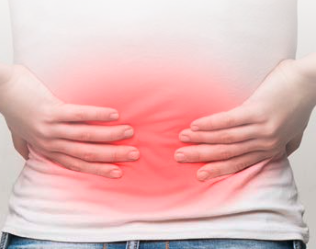|
17/1/2024 0 Comments Revealing the TempleMy friend invited me to India for his wedding between Christmas and New Year. Leela Palace hosted the wedding reception of 750 guests. It was a dazzling Bollywood dancing spectacle.
I had one day free, so I drove south with one of the guests and his two children. We visited the Mahabalipuram Shore Temple. A mouthful to pronounce and one of India’s oldest structural temples that overlooks the shoreline of the Bay of Bengal. We learned that the shifting sands of a large tsunami in 2004 uncovered a significant portion of the temple. The weather calamity exposed temple features built entirely of granite blocks, including ancient rock sculptures of lions, elephants, and peacocks that decorated the walls and temples during the Pallava period of the 7th and 8th centuries. Last year was tough for many people, not only in our local community, but globally. Perhaps it felt like a tsunami for some. Difficult times can reveal something greater of ourselves just like the tsunami of Mahabalipuram. The temple remained hidden, forgotten by the people who lived alongside its buried treasures. It took a tsunami to reveal its splendour. Life’s challenges can be like the sands of Mahabalipuram that burden us, often confusing and concealing our true potential. I wonder if some see their existence as akin to being covered by sand, unaware of the tremendous temple that remains hidden. Sometimes it takes a tsunami to reveal the temple. The universe mysteriously seems to reveal hidden treasures in ways we may never fathom. If we allow ourselves to embrace this uncertainty, life becomes a perpetual journey of self-discovery. The tsunami has passed. A new era dawns. What have you discovered about yourself? What had you ‘forgotten’ about your true identity that were hidden from you? Fear, anxiety and confusion are just the sands that hide what is wonderful about you. You have proven that you can weather the storm. The sands can be washed away to reveal the temple.
0 Comments
Do you suffer from back pain? You’re not alone; unfortunately it’s common - one in six Australians suffers from back problems. These problems can affect all areas of your life; causing difficulty with everyday activities - like bending, lifting, and getting out of bed. You may also experience mental distress and difficulty working.How does back pain happen?
In simple terms, back pain is discomfort felt in the region between your neck and hips, and can result from different causes and have various effects on your body. Back pain can originate from the bones, discs, ligaments, muscles, joints, muscles or nerves in your back. Sometimes, it's referred pain from other sources like menstrual pain or irritable bowel syndrome. Other times, it's due to underlying conditions like arthritis, endometriosis, fibromyalgia, kidney stones, or osteoporosis. Often, it's linked to mechanical issues in the spine. When should you seek help? If you’re struggling with back pain or discomfort, reach out, it’s an indication that all is not well. A professional assessment will help identify the cause. From there, we can discuss treatment options and advice, or, if needed, further assessment or referral. There are also “red flags” - signs that may indicate a serious problem that may need further referral - that should not be ignored. If you have any of these, book a consultation promptly:
While it may appear that the pain has occurred suddenly, back pain can actually manifest long after an issue first develops, sometimes even years later. Therefore, discomfort serves as a reminder to assess the health of your spine. As chiropractors we understand back pain very well. We use a hands-on holistic approach to assess your body, spine, and health. We may evaluate your range of motion, muscle strength, nerve function, balance, coordination, and posture. We’ll identify any problems with your spinal, muscle, nerve, and joint function. Together, we’ll decide on a treatment plan. This can include adjustments to your spine or other joints, strengthening or stretching exercises, and lifestyle, postural, and movement advice. We will work with you to help reduce or eliminate your pain and improve your function. While back pain is common, it’s not unbeatable. It’s a signal from your body telling you something is wrong, much like the oil light warning in a car. Listen to your body! Seeking professional care can set you on the path to a healthier, pain-free life. 3/1/2024 1 Comment Glucosamine and Joint HealthAre you considering taking glucosamine for joint health? It’s been available as a supplement for over a decade, however, not all products are effective, and claims can be misleading. Let’s take a look at what research can tell us about glucosamine and how to get it safely.Glucosamine is a natural component in your body that helps build essential joint cartilage. Healthy cartilage is needed for effortless joint movement. If cartilage gets damaged, it leads to joint problems like inflammation, swelling, and pain. As we age, our natural glucosamine levels decrease, which can contribute to joint wear and tear, possibly leading to osteoarthritis (OA).
But how does it work? Scientists aren’t quite sure. It’s been suggested that glucosamine travels from your bloodstream to the joints once absorbed. There, it contributes to building the glycosaminoglycans (GAGS) required for cartilage. Imagine it this way — constructing a wall requires various materials: bricks, mortar, and water. Similarly, building strong cartilage in your joints requires certain building blocks, glucosamine included. Can glucosamine supplements help? A number of studies suggest that supplementing with glucosamine sulfate may have some benefit in relieving pain in the joints and slowing down the progression of joint damage. These results are promising, but remain inconclusive and studies are ongoing. There are several forms of glucosamine available in supplements, and contents can vary so it's important to exercise caution. Check the ingredients and be aware of any potential side effects and interactions they may cause. Where is glucosamine found naturally? Finding glucosamine-rich foods can be challenging since typical sources like eggshell membranes and crustacean shells are not edible or appetising. Some people find bone broth appealing; this involves simmering shells, and animal bones and joints to create a rich broth. Dietary sources may not have a big impact on how your body makes and uses glucosamine, however foods with anti-inflammatory properties can still help keep your joints healthy and lessen pain and stiffness. 3/1/2024 0 Comments Swim Away From Back PainDo you love to swim? Swimming is terrific for your body and mind, however, like any exercise, it may cause pain depending on your body’s condition. If you have a back problem, swimming may trigger or worsen discomfort. But it can also help you recover. Let’s look at why back pain could occur during swimming and how to prevent and recover from injury.Swimming is usually easy on the body, but using the wrong technique or overdoing it can lead to back pain. Your spine plays a key role in swimming by providing support and flexibility. Repeating moves or using incorrect form can strain the muscles and joints involved, especially in certain strokes. Backstroke, breaststroke, and butterfly can pose a higher risk for lower back pain, particularly among elite athletes.
So, how can you prevent injury? Or use swimming to relieve back pain? Swimming improves core strength by strengthening your abdominals and lower back. A strong core is essential for overall stability, balance, and preventing injuries. Targeted exercises can strengthen weak areas and relieve overused ones. This lessens injury risk and aids recovery. Correct technique is essential in preventing injury; it’s like ensuring a solid foundation for a building. The better the foundation, the less chance something will go wrong. Ask a professional instructor to review your stroke and form. Proper technique will help evenly distribute effort across your body and reduce back strain. Warming up prepares you for activity and gets your muscles, joints, nerves, brain, heart, and blood vessels ready to move, which can reduce your injury risk. To prevent back pain while enjoying the benefits of swimming, it's important to learn how it can happen and take precautions. Feel free to ask us how to stay safe and make the most of your swimming experience. These are large balls which are durable and flexible and designed to be puncture- resistant. They can help improve your balance, stability, posture, and strength.Whether you're actively exercising or simply sitting on the ball, your body engages various muscle groups, particularly strengthening your back muscles and core, crucial for providing support to your spine. A strong core can ease back pain and improve posture, leading to a healthier spine.
Furthermore, using exercise balls can enhance flexibility, coordination, and overall body awareness. These benefits are crucial for maintaining proper body mechanics, which is essential for preventing injuries and reducing strain on your spine. Can anyone use them? Exercise balls are suitable for people of all ages and fitness levels. If you suffer from back pain, poor posture, or spinal issues, incorporating ball exercises into your routine may help ease discomfort and promote healing. Additionally, people looking to enhance their fitness regimen, office workers seeking relief from sitting all day, or people who just want to improve their balance and stability, can benefit from using an exercise ball. Moreover, exercise balls can aid exercise during pregnancy by easing the uneven distribution of weight. They can also help during labour by providing support for various positions, assisting gentle movements, and more. How do you use them correctly? Using exercise balls correctly is essential to maximise their benefits and avoid injuries. Here are some guidelines to follow: Right size: Select a ball that matches your height. When sitting on it, your feet should rest flat on the ground, and your thighs should be parallel to the floor. Good posture: Ensure proper posture while exercising on the ball. Engage your core muscles and keep your spine in a neutral position to prevent strain. Start slowly: If you’re new to using exercise balls, start with basic movements and gradually progress to more challenging exercises as your strength and balance improve. Variety: Explore a variety of exercises to target various muscle groups, ensuring engaging workouts and a comprehensive strengthening routine. Seek guidance: If you're unsure about the right techniques, we can guide you through exercises tailored to your needs and ensure you perform them correctly. In summary, using an exercise ball provides versatile benefits for a healthy body and lifestyle. Consult your chiropractor to ensure it's suitable for you. The New Year is often a time for both reflection on the past and anticipation for the year ahead, prompting us to consider the changes we want, (or need) to make, and how to achieve them. |
AuthorAdam's Back is a team of dedicated complimentary health professionals. Our aim is to support you in finding drug-free solutions for better health. Archives
July 2024
Categories |
Search by typing & pressing enter









 RSS Feed
RSS Feed